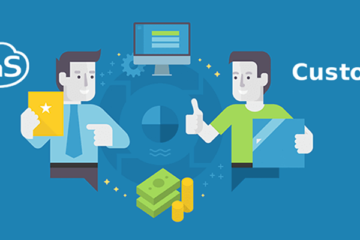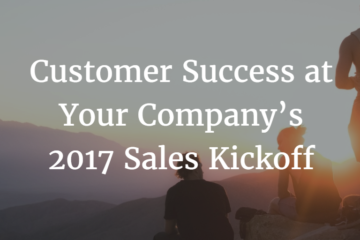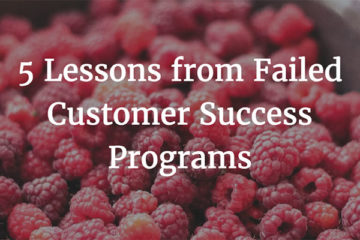
6 Practical Tips for Navigating the New Normal Funding World
Dave has been an investor since 2000 and is currently a general partner at Technology Crossover Ventures (TCV). His investments include Act-On, AppNexus, ExactTarget (acquired by Salesforce), Facebook (FB), Merkle, Ren Ren (RENN), Rover.com, Sitecore (agreed to be acquired by EQT), Siteminder, SMT (acquired by IHS), Splunk (SPLK), and Tinyprints (acquired by Shutterfly). (For a full list of TCV’s investments, see www.tcv.com/portfolio). David has been named to the Forbes Midas List of top 100 technology investors.
Nick has been working in Silicon Valley for almost two decades across four startups and one big company. Most recently, he was CEO of SaaS email archiving provider LiveOffice which he eventually sold to Symantec. Nick is currently CEO of Gainsight, the leading SaaS provider of Customer Success Management solutions. Nick never made the Midas List but did have his question posted in the Bill Simmons’ Football Mailbag once.
Nick and Dave are longtime friends, and they caught up recently, fresh off of the Tableau carnage.
[Nick]: Feels like the world is ending. Is the sky falling? Should I quit my job and buy farmland in Idaho?
[Dave]: The sky is not falling and you should not quit your job. The stock market moves in cycles, and we may be moving off the “up and to the right” part of the cycle, but generally things are reasonably healthy from what I can see. You should, however, reconsider your football allegiances. The Steelers defense made Ryan Mallett look like Tom Brady last season.
[Nick]: Ryan Mallett is underrated. And since I swore to make no Patriots cheating jokes in this chat, I’ll just move away from this football talk “deflated.” What are you telling your companies? Should I change how I’m thinking about the world? Please tell me Good Times aren’t RIP – “Good Times” was a great show!
[Dave]: Well let’s start with what’s changed. Public market valuations have come down markedly, and they were already at a significant discount to private valuations. As a result, private valuations are changing and the cost of capital and financing risk has increased. So if you can control your own destiny, i.e. by getting your business to break-even without additional financing, that is a very good place to be.
I think the details beyond that are quite a bit more nuanced and the situational specific are pretty important.
[Nick]: Ah the typical useful answer of “it depends.” I get the “cost of capital argument” but am trying to make it tangible – and figure out how to talk to my team about it. So stop hedging, what do you mean? What should I be thinking at Gainsight?
[Dave]: Well I know you’re going to take over the world…
[Nick]: Shhh! That’s a secret…
[Dave]: But it’s been a while since we’ve talked shop, so give me a rundown. Based on your latest round, are you fully financed, can you get to cash flow breakeven?
[Nick]: We just finished our plan for FY17 (which is somehow in 2016 – I still don’t understand Fiscal Years), so perfect timing. It’s definitely amazing how much expense in a SaaS business goes into (1) landing new clients (Customer Acquisition Cost) and (2) scaling R&D in the early days. In our world with a payback period of ~1 year (in terms of revenue), my net burn is basically almost exactly my planned Annual Recurring Revenue growth. So with all of that gobbledygook said, we could be breakeven if we stopped investing in Sales and Marketing. Once you’re at a certain scale and with a >100% net renewal rate, cutting burn to break even is very doable – though it wouldn’t be fun!
[Dave]: What does the competitive landscape look like? – Give me your real view, not the standard fundraising 2×2. Who scares you in a head to head competition, who outside the category is in position to run you over?
[Nick]: For us, Customer Success Management Software was a new category a few years ago and therefore attracted several smart entrepreneurs / teams to go after it. There were three other venture-backed companies in our category a year ago – but two pivoted out and the remaining one has (while being a good company) been on a different growth track and market focus. So while I respect our past, present and future competitors a lot, direct competition isn’t something we think about as much anymore. We’ve always been pretty focused on working with larger customers where it’s really more about their needs than it is about the competition. On that note, in larger companies, the real competitor is always “build versus buy.”
[Dave]: What about non-endemic gorillas outside of the category?
[Nick]: Could we get run over by some huge tech player if they focused? Sure, every SaaS startup has that risk. But we think what we’re doing is new enough that it’s not yet a big category for the big players.
[Dave]: Has demand slowed down, what are your real sales and marketing payback metrics?
[Nick]: On a revenue basis, about a year to pay back customer acquisition – and on a gross margin basis, about 5 quarters. Just as important, our net renewal and retention rates are both significantly above 100% on a dollars basis. And demand hasn’t slowed down yet – though you always have to be paranoid.
[Dave]: What are your real moats against big incumbents, what can they not easily replicate?
[Nick]: Moats are definitely getting drier in business in general (hence companies have to focus on driving success for their customers… sorry shameless plug!) But in SaaS, I think some moats naturally exist:
- Workflow moat – do a large number of people live and work in your tool? In our case, our successful clients run their Customer Success operation around Gainsight.
- Data moat – does your application create new data? In our case, Gainsight creates unique data around customer health and customer success activity.
- Knowledge/expertise moat – software is all about encoding real world expertise in repeatable ways. In our world, we have captured the knowledge of 1000s of leading Customer Success teams in best practices in our product (via a feature we call “Vault” that pushes these best practice templates to clients).
Dave’s Advice
[Dave]: Ok, here’s my take. (Caveat: Investors are masters at forming strong opinions from very little information; the advice is worth what it is costing you). You’re actually in a really enviable spot. You control your own destiny in terms of being fully financed which is a big deal. The competitive landscape is pretty benign, so you don’t need to do anything unnatural in terms of racing to take market share or gain scale.
With that in mind, you don’t have to take huge fliers and risk being fully financed until you’re closer to closing the gap between revenue and expenses and incremental burn is more discretionary.
VC Take 1: Use Downturn to Extend Product Moat
Where I would invest is in product. Others won’t, and when the world returns to happier days you will be that much further ahead than the direct competition, and that much better positioned against big incumbents. If you fundamentally believe in the data asset, i would invest in product to really bring that to life, so that your current customer base (and potentially non-customers) fully participate to enrich that “data co-op.” That strikes me to be the deepest of the moats you described.
VC Take 2: Optimize Sales and Marketing and Billing Terms to Be Cash Flow Accretive
On the sales and marketing side, if demand doesn’t slow down, of course still keep hiring sales capacity, but do it in a way that it’s accretive to your cash flow breakeven goal. What does that mean tangibly? Keep the NCAA Tournament TV campaign on the shelf (sorry for the Chipshot.com dig, the Masshole slipped out), and balance sale efficiency with sales capacity. Details like billing terms matter a lot. They are huge cash flow drivers, and can set customer and industry expectations.
VC Take 3: Take Short-term Hit In Growth to Fix Lingering Problems
On that last point: In happy, growth-at-any-cost days, companies are so focused on the top line that CEOs are super reluctant to change anything that reduces sales capacity. I get it. So much of company momentum (and frankly viability) is getting to scale and building out the revenue base. But, I think CEOs should take this opportunity to reset expectations and do the hard thing. Overhaul the “problem geographies,” experiment with substituting marketing/ BDR resources for more expensive sales capacity, or just clear out the lower performers. One of my CEOs did this pro-actively six months ago, even without the air cover of “RIP Good Times,” and I think it was simply one of the strongest examples of leadership I’ve seen in a long time. Ok, I’ll get off my soapbox now, but assuming the private capital market stays depressed for a while, take it as an opportunity to get lean and mean.
Nick’s Reaction
[Nick]: That all really resonates with me. Here’s what I’m taking away, as the guy who has to make this happen…
CEO Take 1: Funding Horizon Dictates Everything
At the end of the day, private company CEOs today are fundamentally in two distinct buckets:
- Have to raise money near-term (i.e., next 12 months) – need to do anything required to keep company funded
- Funded for 2+ years – if you’re lucky enough to be in this category, the equation shifts from worrying about what the “next investor” would think to making sure you end up with a good (ideally cash flow generating) business on the other side of this downturn
The second scenario affords companies cutting things that look good from a “vanity metrics” perspective but don’t converge to a good business long-term – high growth but unprofitable customer segments, scaling but uneconomic customer acquisition tactics and even ineffective team members.
CEO Take 2: Days of Customer Acquisition At All Costs Is Over
During the bubble, the obsession with top line growth caused many CEOs to pour gas on the fire of sales and marketing even if they knew it wasn’t sustainable. The default answer for use of capital was “growth.” While growth is still the long-term objective, sustainable growth might mean reinvesting more in your product and customers’ success (sorry for the shameless plug!)
CEO Take 3: Build Strategic Value During the Downturn
I think CEOs will rethink priorities as the funding environment cools. They will go beyond top line revenue to look at:
- Long-term cost structure and profitability profile
- Understanding their Total Addressable Market in more thoughtful detail
- Building defensibility and stickiness into their product and processes
[Nick]: So after all of that serious talk, should we make a friendly wager on who has a better record in the 2016-2017 NFL season between the Patriots and Steelers? Loser tweets a picture of themselves in the winner’s jersey? Though I’ll definitely have to take a long shower if I put on a Gronkowski jersey…



